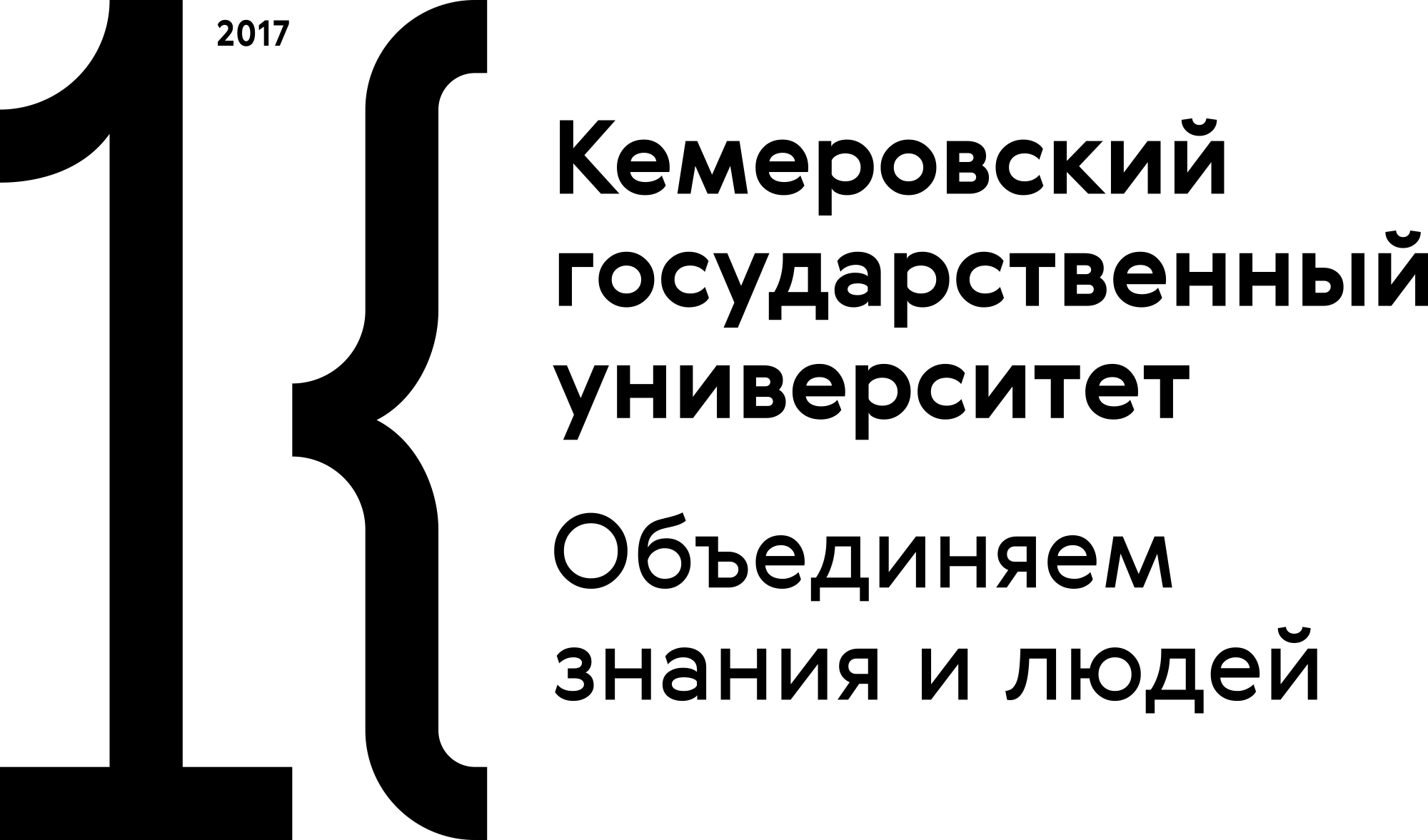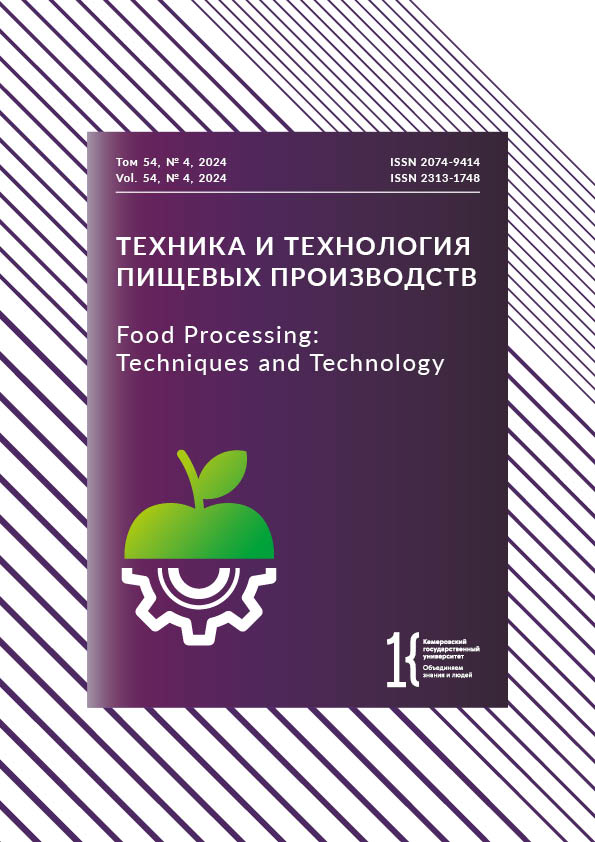Kemerovo, Kemerovo, Russian Federation
Kemerovo, Russian Federation
Russian Federation
Kemerovo, Russian Federation
Low-temperature concentration of milk and dairy products is a prospective alternative to such traditional concentration methods as evaporation or membrane technologies. This energy-effective method preserves the native properties of dairy raw materials. In this research, the kinetics of moisture freezing made it possible to determine the effect of time, temperature, and composition on the amount of frozen ice on the cooled surface. The study featured the main physical and chemical parameters of milk, i.e., water, fat, protein, and solids. Chromel-copel thermoelectric converters were used to identify the freezing temperature. Experimental laboratory equipment made it possible to describe the kinetics of low-temperature concentration. The ice growth rate curves were similar and not linear at temperatures between –2 and –8°C. At all temperature conditions, the solids increased together with the freezing time as the coolant temperature went down. The experiment yielded a regression equation that revealed the mass fraction of solids in concentrated skim milk depending on the temperature and freezing time. The temperature and freezing time affected the transition rate of milk solids into ice. The coolant temperature had the greatest effect on the cryoconcentration of skim milk. When the temperature of the coolant was reduced from –2 to –8℃, it increased the share of solids in the finished product and sped up its transition into ice. The optimal temperature for milk concentration in the experimental capacitive-type crystallizer proved to be –4°C.
Skim milk, cryoconcentration, solids, low-temperature concentration, freezing point, crystallization kinetics, separation freezing, cryoscopic temperature
1. Ternovykh KS, Kitaev YuA, Uzhik VF, Kitaeva OV. Structural changes in the production and consumption of milk and dairy products in Russia. Vestnik of Voronezh State Agrarian University. 2023;16(3):198–207. (In Russ.). https://doi.org/https://doi.org/10.53914/issn2071-2243_2023_3_198; https://elibrary.ru/MBFHVP
2. Beketov SV, Kaledin AP, Senator SA, Upelniek VP, Kuznetsov SB, Stolpovsky YuA. Zeboid cow milk: physicochemical quality indicators. Foods and Raw Materials. 2022;10(1):171–175. https://doi.org/10.21603/2308-4057-20221-171-175; https:// elibrary.ru/GNPHLD
3. Yankovskaya VS, Dunchenko NI, Kuptsova SV, Manitskaya LN, Fedotovskaya MP. Factors affecting the safety and quality of raw milk for the production of sterilized drinking milk. Dairy Industry. (In Russ.). 2021;(9):57–59. https://doi.org/https://doi.org/10.31515/1019-8946-2021-09-57-59; https://elibrary.ru/ABSIYF
4. Alkadour MI, Pryanichnikova NS, Yurova EA, Petrov AN. Effect of Thermal Treatment and Pasteurization on Milk Powder Quality. Food Processing: Techniques and Technology. 2024;54(2):275–284. (In Russ.). https://doi.org/10.21603/2074- 9414-2024-2-2506; https://elibrary.ru/ZMQCHA
5. Tsivilev AS, Minukhin LA. The concentration of milk in the multiple-effect evaporation plants. Youth and Science. 2021;(5):33. (In Russ.). https://elibrary.ru/PIFAOD
6. Bagaev AA, Bobrovskiy SO. Electrotechnological Heat Treatment of Milk: Energy and Exergy Efficiency. Food Processing: Techniques and Technology. 2023;53(2):272–280. https://doi.org/10.21603/2074-9414-2023-2-2428; https:// elibrary.ru/SBXYHE
7. Neverov EN, Korotkiy IA, Bakin IA, Borodulin DM, Korotkaya EV, Gorelkina AK, et al. Power supply, technological machinery, and agro-industrial equipment. Kemerovo: Kemerovo State University; 2022. 168 p. (In Russ.). https://elibrary.ru/AGVWZD
8. Ostroumov LA, Korotkaya EV, Maltseva OM. Effects of cryoconcentrating on the level of the skim milk total solids. Dairy Industry. 2018;(8):60–61. (In Russ.). https://doi.org/10.31515/1019-8946-2018-8-60-61; https://elibrary.ru/ UVDFWI
9. Vodyakov VN, Kuvshinova OA, Repin AD. Study of the milk concentration process using ultrafiltration. Machinery and Equipment for Rural Area. 2020;(5):27–31. (In Russ.). https://doi.org/10.33267/2072-9642-2020-5-27-31; https://elibrary.ru/ MDACKE
10. Balde A, Aïder M. Effect of cryoconcentration, reverse osmosis and vacuum evaporation as concentration step of skim milk prior to drying on the powder properties. Powder Technology. 2017;319:463–471. https://doi.org/10.1016/ j.powtec.2017.07.016
11. Balde A, Aider M. Impact of sterilization and storage on the properties of concentrated skim milk by cryoconcentration in comparison with vacuum evaporation and reverse osmosis concentration. Food Process Engineering. 2019;42(5):e13130. https://doi.org/10.1111/jfpe.13130
12. Zielinski AAF, Zardo DM, Alberti A, Bortolini DG, Benvenutti L, Demiate IM. Effect of cryoconcentration process on phenolic compounds and antioxidant activity in apple juice. Journal of the Science of Food and Agriculture. 2019; 99(6):2786–2792. https://doi.org/10.1002/jsfa.9486
13. Korotkiy I, Korotkay E, Neverov E. Prospects for using the method of separation freezing for whey processing. Conference Series: Earth and Environmental Science. 2019;395:012070. http://doi.org/10.1088/1755-1315/395/1/012070; https://elibrary.ru/HVBQQR
14. Korotkiy I, Neverov E, Gorelkina A, Korotkaya E, Zadesenets A. The dehydrator parameters for convective drying of food products. BIO Web of Conferences. 2023;64:01023. https://doi.org/10.1051/bioconf/20236401023
15. Petzold G, Orellana P, Moreno J, Cuevas C. Process Parameters of Vacuum-assisted Freeze Concentration. Chemical Engineering Transactions. 2017;57:1789–1794. https://doi.org/10.3303/CET1757299
16. Zhang B, Feng X. Assessment of pervaporative concentration of dairy solutions vs ultrafiltration, nanofiltration and reverse osmosis. Separation and Purification Technology. 2022;292:120990. https://doi.org/10.1016/j.seppur.2022.120990
17. Arriaga-Lorenzo P, de Jesús Maldonado-Simán E, Ramírez-Valverde R, Martínez-Hernández PA, Tirado-Gonzá- lez DN, Saavedra-Jiménez LA. Cold chain relevance in the food safety of perishable products. Foods and Raw Materials. 2023;11(1):116–128. https://doi.org/10.21603/2308-4057-2023-1-559; https://elibrary.ru/JKSWOT
18. Alinovi M, Mucchetti G, Wiking L, Corredig M. Freezing as a solution to preserve the quality of dairy products: the case of milk, curds and cheese. Critical Reviews in Food Science and Nutrition. 2020;61(20):3340–3360. https://doi.org/https://doi.org/10.1080/10408398.2020.1798348
19. Sánchez J, Hernández E, Auleda JM, Raventós M. Review: Freeze Concentration Technology Applied to Dairy Products. Food Science and Technology International. 2011;17(1):5–13. https://doi.org/10.1177/1082013210382479
20. Amran NA, Samsuri S, Jusoh M. Effect of Freezing Time and Shaking Speed on the Performance of Progressive Freeze Concentration via Vertical Finned Crystallizer. 2018;15(2):5356–5366. https://doi.org/10.15282/ijame.15.2.2018.15.0412
21. Hauptmann A, Podgoršek K, Kuzman D, SrčičS, Hoelzl G, Loerting T. Impact of Buffer, Protein Concentration and Sucrose Addition on the Aggregation and Particle Formation during Freezing and Thawing. Pharmaceutical Research. 2018;35:101. https://doi.org/10.1007/s11095-018-2378-5
22. Orellana-Palma P, González Y, Petzold G. Improvement of Centrifugal Cryoconcentration by Ice Recovery Applied to Orange Juice. Chemical Engineering and Technology. 2019;42(4):925–931. https://doi.org/10.1002/ceat.201800639
23. Orellana-Palma P, Petzold G, Guerra-Valle M, Astudillo-Lagos M. Impact of block cryoconcentration on polyphenol retention in blueberry juice. Food Bioscience. 2017;20:149–158. https://doi.org/10.1016/j.fbio.2017.10.006
24. Orellana-Palma P, Takhar PS, Petzold G. Increasing the separation of block cryoconcentration through a novel centrifugal filter-based method Separation. Science and Technology. 2019;54(5):786–794. https://doi.org/10.1080/01496395. 2018.1512615
25. Murillo D, Hernandez E, Raventos M, Prudencio ES, Canella MHM. Progressive freeze concentration of sacarose solutions through magnetic agitation. Afinidad. 2020;590:85–91.
26. Orellana-Palma P, Tobar-Bolaños G, Casas-Forero N, Zúñiga RN, Petzold G. Quality Attributes of Cryoconcentrated Calafate (Berberis microphylla) Juice during Refrigerated Storage. Foods. 2020;9(9):1314. https://doi.org/10.3390/foods9091314
27. Orellana-Palma P, Lazo-Mercado V, Gianelli MP, Hernández E, Zúñiga RN, Petzold G. Influence of Cryoconcentration on Quality Attributes of Apple Juice (Malus Domestica cv. Red Fuji). Applied Sciences. 2020;10(3):959. https:// doi.org/10.3390/app10030959
28. Petzold G, Orellana P, Moreno J, Valeria P. Physicochemical Properties of Cryoconcentrated Orange Juice. Chemical Engineering Transactions. 2019;75:37–42. https://doi.org/10.3303/CET1975007
29. Korotkiy IA, Neverov EN, Rasshchepkin AN, Fedorov DE, Korotkaya EV. The low-temperature technology of processing the blood of slaughtered animals. ARPN Journal of Engineering and Applied Sciences. 2020;15(21):2414–2423. https://elibrary.ru/YVOJWB
30. Ovsyannikov VYu, Klyuchnikov AI, Lobacheva NN, Berestovoy AA. Concentration of cattle blood by moisture freezing. Conference Series: Earth And Environmental Science; 2019; Krasnoyarsk. Krasnoyarsk Science and Technology City Hall of the Russian Union of Scientific and Engineering Associations; 2019:42021. https://doi.org/10.1088/1755-1315/ 315/4/042021; https://elibrary.ru/GFRJJL
31. Bastías-Montes JM, Martín V-S, Muñoz-Fariña O, Petzold-Maldonado G, Quevedo-León R, Wang H, et al. Cryoconcentration procedure for aqueous extracts of maqui fruits prepared by centrifugation and filtration from fruits harvested in different years from the same localities. Journal of Berry Research. 2019:9(3):377–394. https://doi.org/10.3233/JBR-180368
32. Zambrano A, Ruiz Y, Hernández E, Raventós M, Moreno FL. Freeze desalination by the integration of falling film and block freeze-concentration techniques. Desalination. 2018;436:56–62. https://doi.org/10.1016/j.desal.2018.02.015
33. Kolhe P, Goswam S. Bulk Protein Solution: Freeze–Thaw Process, Storage and Shipping Considerations. In: Warne NW, Mahler H-C, editors. Challenges in Protein Product Development. Cham: Springer; 2018. pp. 313–336. https:// doi.org/10.1007/978-3-319-90603-4_15
34. Bredun MA, Prestes AA, Panceri CP, Prudêncio ES, Burin VM. Bioactive compounds recovery by freeze concentration process from winemaking by-product. Food Research International. 2023;173:113220. https://doi.org/10.1016/j.foodres. 2023.113220
35. Korotkiy IA, Korotkaya EV, Neverov EN, Fedorov DE, Gushchin AA. The parameters selection for separating freezing-out for extracting the components from curd whey. Conference Series: Earth and Environmental Science; 2021; International Conference on Production and Processing of Agricultural Raw Materials Technology of Fats and Oils; 2021;640:042016. https://doi.org/10.1088/1755-1315/640/4/042016; https://elibrary.ru/BANNPK
36. Lamkaddam IU, Vega E, Colón J, Ponsá S, LlenasL, Mora M. Progressive freeze concentration of cheese whey for protein and lactose recovery. International Dairy Journal. 2023;139:105572. https://doi.org/10.1016/j.idairyj.2022.105572
37. Korotkij IA, Gunko PA, Maltseva OM, Uchajkin AV. Device for liquid food products concentration. Russia patent RU 2509514C1. 2014.
38. Korotkiy IA, Korotkaya EV, Neverov EN, Plotnikov IB, Efremov DA. Separatory freezing and cryoconcentration of milk and whey. 2021; Veliky Novgorod. Veliky Novgorod: Innovative Technologies in Agroindustrial, Forestry and Chemical Complexes and Environmental Management; 2021. 012052. https://doi.org/10.1088/1755-1315/852/1/012052; https:// elibrary.ru/GTZKJF











